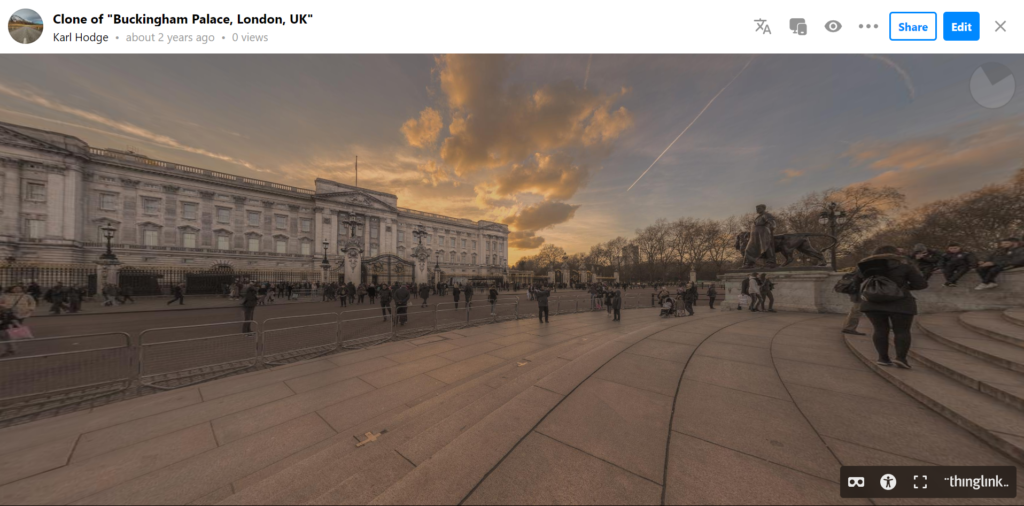
ThingLink is a well-established visual authoring tool for creating embedded, interactive media for the web. It has expanded support for immersive (360) photos in recent iterations. There’s a suite of tools – but they are all in support of this core aim – and use the same simple UI. The core elements are:
- A “Multimedia Editor” for adding HTML overlays (or cards) to 2D and 360 imagery
- A “Scenario Builder” tool for creating branching multimedia (currently restricted to certain accounts)
- A “Guided Tour” creator for building narrated spatial narratives which can be viewed online or in VR
- AR tools for adding hotspots to real-world locations
Feelings
While some tools have gradually diminished in usefulness over the course of study (Matterport, Kuula) and others have been deprecated, ThingLink has expanded its remit. ThingLink began as a tool for creating image maps in HTML more easily. Image maps enable developers to create “hotspots” over images, which can then trigger other HTML or JavaScript functions. For example, they may act as simple links to other web pages, or a more sophisticated trigger for programmatic action – such as a video overlay.
ThingLink’s central metaphor remains the same, but supporting media other than simple images (including 3D models and 360-degree images) has transformed it into a powerful tool for creating VR scenarios.
However, there are also hidden costs. To share branching “Scenarios” or use AR tools, requires an upgrade. I had an educational subscription, which locked those options out.
Evaluation
ThingLink is an exceptionally simple-to-use, professionally built authoring tool now. In contrast to other tour creators and online multimedia builders, it has added features without introducing bloat, streamlining the multimedia creation process. I have a slightly different view on this than other tools, as I’ve been using it for other purposes and am already comfortable with the interface. This also makes it a piece of software that might be accessible to journalists with little experience in programming or even just creative tools.
Application
Tools that enable 360 spheres, text and media overlays, links, tour creation, and buttons are all needed to encode simple interactivity, with or without features that support branching storylines. It takes more planning without those specific features, but it’s doable.
So, ThingLink is a strong frontrunner for “everyday” low-cost, rapid VR journalism development (and AR journalism dev) when combined with hardware for taking 360-degree photos; journalism that enables a sense of seeing a location, if not being in a location, combined with investigative features.
Conclusions
In its current form, ThingLink resembles nothing less than a web-based version of HyperCard. Adding buttons to images and 360 spheres enables users to create visual scenarios with rich investigative possibilities. These are more than prototypes or infographics; they are full-on visual reporting.